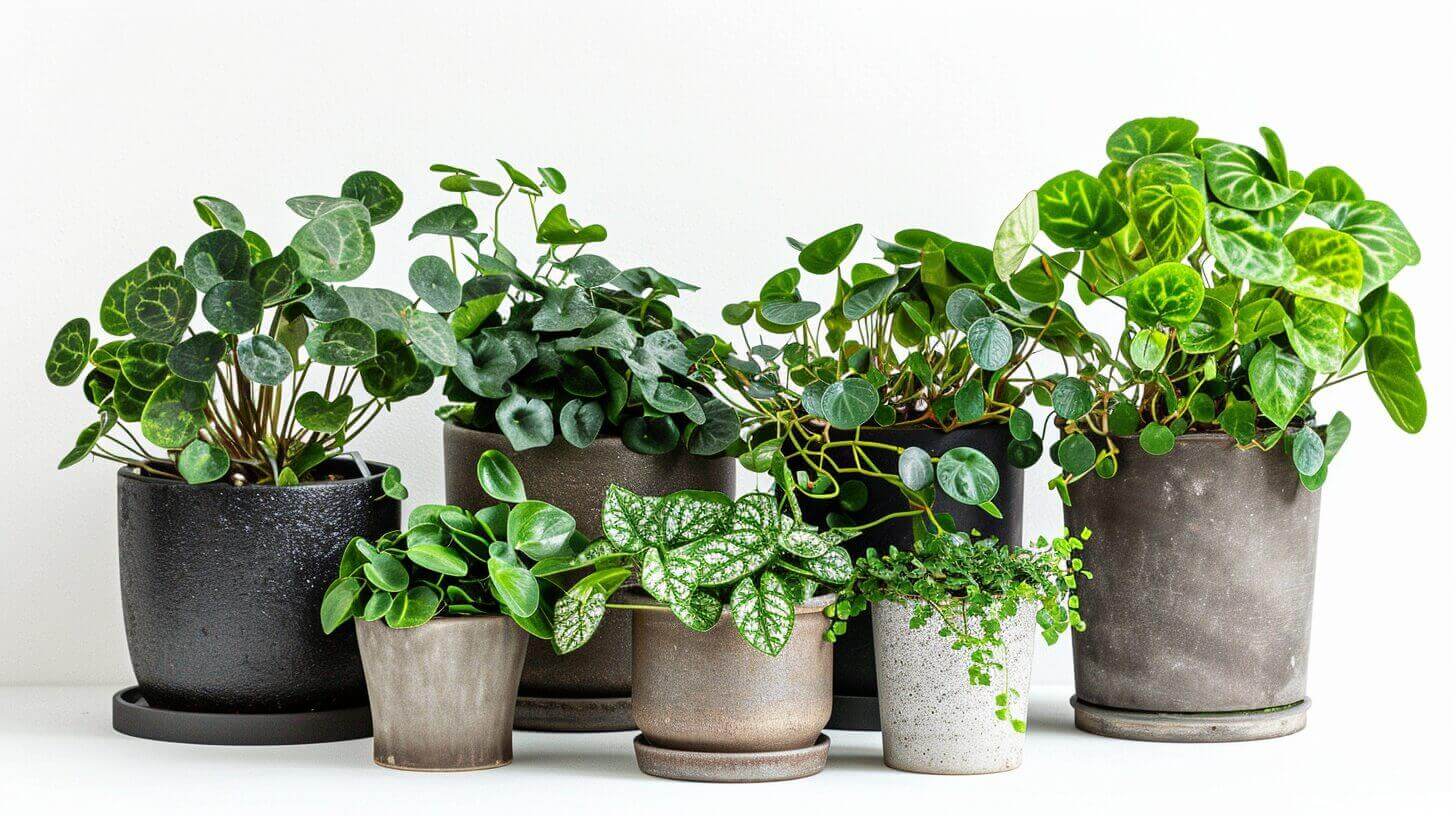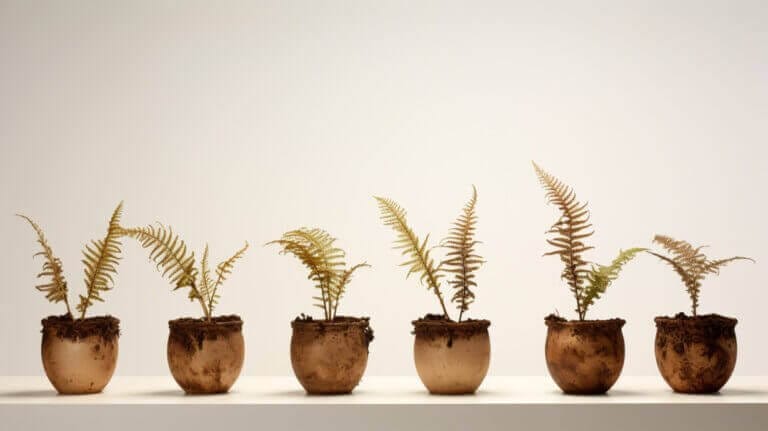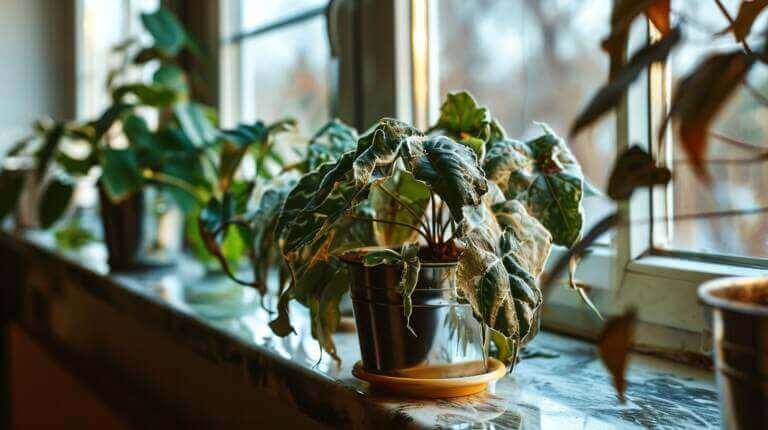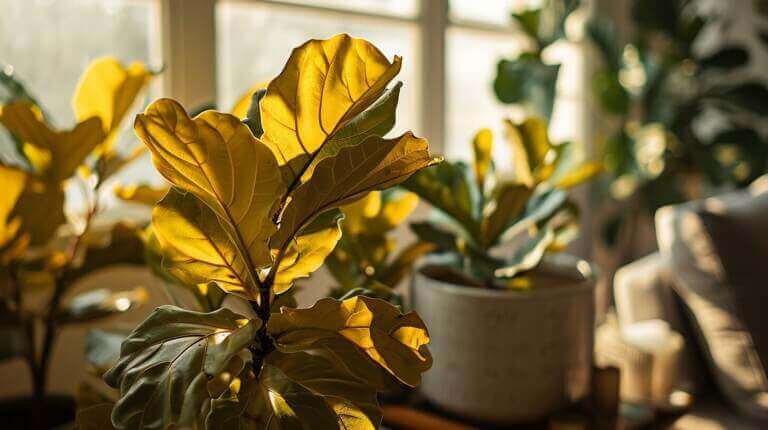How to Grow and Care for Peperomia Plant Variegated Varieties Indoors
Peperomia plants are a popular choice for indoor plant enthusiasts due to their stunning variegated foliage and ease of care. These tropical plants, belonging to the Piperaceae family, are native to Mexico, South America, and the Caribbean. With over 1,500 known species, peperomia plants offer a wide variety of options to suit any plant lover’s taste.
Key Takeaways:
- Peperomia plants are native to Mexico, South America, and the Caribbean and belong to the Piperaceae family.
- They have thick, fleshy leaves that contribute to their drought tolerance and low-maintenance nature.
- Popular varieties include peperomia obtusifolia, raindrop peperomia, ripple peperomia, and leaf peperomia.
- Peperomia plants thrive in medium to bright indirect light and prefer well-draining soil that retains moisture.
- They appreciate high humidity, which can be achieved through methods such as placing a tray of water and pebbles beneath the plants or misting their leaves.
- Peperomia plants can be easily propagated through stem cuttings and light pruning can be done in the early spring to maintain their appearance.
Choosing the Right Variegated Peperomia Variety
Factors to consider when selecting a variegated peperomia
When it comes to choosing the perfect variegated peperomia variety for your indoor garden, there are a few factors to consider. These factors will help you determine which variety will thrive in your specific conditions and complement your existing plants. Here are some key factors to keep in mind:
- Light requirements: Variegated peperomias generally thrive in bright indirect light, although some varieties can tolerate lower light conditions. Take into account the natural light available in the area where you plan to place your peperomia and choose a variety that matches those light requirements.
- Size: Peperomias come in a range of sizes, from compact varieties that are perfect for small spaces to larger varieties that can become a statement plant in your indoor garden. Consider the amount of space you have available and choose a variety that fits well into your landscape.
- Watering needs: Peperomias are sensitive to overwatering, so it is essential to allow the soil to dry between waterings. Different varieties may have slightly different watering needs, so be sure to research the specific requirements of the variety you choose.
- Soil requirements: Peperomias prefer well-draining soil that is rich in organic matter. Consider the type of soil you have available or be prepared to create a suitable soil blend for your peperomia.
Popular variegated peperomia varieties
There are plenty of variegated peperomia varieties to choose from, each with its own unique beauty. Here are some popular varieties that are known for their stunning variegation:
- Peperomia obtusifolia ‘Variegata’: This variety features creamy-white variegation on its glossy green leaves. It is a compact plant that can fit well on a windowsill or as part of a larger arrangement.
- Peperomia caperata ‘Variegata’: With its heart-shaped leaves adorned with cream-colored edges, this variety adds a touch of elegance to any indoor garden. It prefers medium to bright indirect light and can be a stunning addition to a tabletop display.
- Peperomia clusiifolia ‘Raindrop’: Known for its attractive teardrop-shaped leaves, this variety has variegated foliage that ranges from green to cream. It is a versatile plant that can adapt to various light conditions, making it an excellent choice for different areas of your home.
- Peperomia obtusifolia ‘Lime’: If you want a pop of color in your indoor garden, this variety is the perfect choice. Its lime-green leaves are edged with creamy-white, creating a vibrant and eye-catching display.
- Peperomia ripple ‘Variegata’: This variety has wavy leaves that feature creamy-white variegation. It is a compact plant that can be easily incorporated into a terrarium or as part of a mixed planting.
Lighting Requirements
Understanding the lighting needs of variegated peperomia
When it comes to growing stunning variegated peperomia varieties indoors, understanding their lighting requirements is crucial. Variegated peperomias, like other peperomia plants, generally thrive in bright indirect light. However, it’s important to note that different varieties may have slightly different lighting preferences.
Variegated peperomias with lighter-colored leaves, such as Peperomia obtusifolia ‘Variegata’ and Peperomia clusiifolia ‘Raindrop’, tend to require more light compared to those with darker foliage, such as Peperomia caperata ‘Variegata’. These varieties thrive in medium to bright indirect light and may exhibit better variegation and growth when placed closer to a well-lit window.
Providing proper lighting conditions for optimal growth
To ensure that your variegated peperomias receive the right amount of light, consider the following tips:
- Find the ideal location: Choose a spot in your home that receives medium to bright indirect light. This could be near an east or west-facing window where the plant can benefit from the gentle morning or afternoon sunlight.
- Rotate the plant: To ensure even growth and prevent the plant from leaning towards the light source, rotate your variegated peperomia periodically. This will allow all sides of the plant to receive adequate light exposure.
- Use sheer curtains or blinds: If the light in your chosen location is too intense, you can filter it by using sheer curtains or blinds. This will help create the ideal balance of light for your variegated peperomia.
- Avoid direct sunlight: While variegated peperomias can tolerate some direct sunlight, it’s best to avoid exposing them to intense rays. Direct sunlight can scorch the leaves and cause damage to the plant.
- Supplement with artificial light: If you don’t have access to a well-lit location, you can supplement natural light with artificial lighting options. Use grow lights specifically designed for indoor plants and position them at the recommended distance from your variegated peperomias.
Temperature and Humidity
Ideal temperature and humidity levels for variegated peperomia
Variegated peperomia varieties, like other peperomia plants, have specific requirements when it comes to temperature and humidity for optimal growth and health. Understanding these needs and providing the right environment is essential for ensuring your variegated peperomia thrives indoors.
Variegated peperomias generally prefer room temperatures between 65 and 80 degrees Fahrenheit. This temperature range provides a comfortable climate for the plants to grow. However, it is important to protect them from drafts and extreme temperature fluctuations caused by air-conditioning or heating vents. These sudden changes in temperature can stress the plant and negatively affect its growth.
Tips for maintaining the right climate
- Misting: Misting the leaves of variegated peperomias can help increase humidity levels. Use a fine mist sprayer and gently spray the leaves once or twice a day, depending on the dryness of the environment. Avoid misting too frequently as it can lead to fungal issues.
- Tray with pebbles and water: Place the pot of your variegated peperomia on a tray filled with pebbles and water. Make sure the bottom of the pot is not in direct contact with the water. As the water evaporates, it creates moisture around the plant, increasing humidity levels.
- Grouping plants together: Another way to create a more humid microclimate is by grouping your variegated peperomias together. As the plants transpire, they release moisture into the air, increasing humidity levels mutually.
- Humidifier: If you have a large collection of variegated peperomias or if the indoor environment is particularly dry, investing in a small-scale humidifier can be beneficial. Place the humidifier near the plants to maintain the desired humidity levels consistently.
Choosing the Right Potting Mix and Light Conditions
When it comes to growing stunning variegated peperomia varieties indoors, choosing the right potting mix and providing the appropriate light conditions are essential for their optimal growth.
Peperomia plants thrive in a loose and well-draining potting mix. One option is to use orchid potting mix, which mimics the conditions of their natural habitat. Alternatively, you can lighten regular potting soil by adding coco coir and perlite. This creates a mix that retains moisture well but also allows excess water to drain, preventing the risk of overwatering.
As for light conditions, variegated peperomia varieties prefer medium to bright indirect light. Placing them in front of a west- or east-facing window, or a few feet back from a south- or north-facing window, will provide the ideal amount of light. It’s important to avoid exposing them to direct sunlight, as it can burn their leaves and cause damage to the plant.
| Light Conditions | Ideal Placement |
|---|---|
| Medium Indirect Light | In front of a west- or east-facing window |
| Bright Indirect Light | A few feet back from a south- or north-facing window |
Proper Watering and Humidity for Peperomia Plants
When it comes to caring for your peperomia plants, understanding their watering and humidity needs is crucial for their overall health and growth. These tropical plants thrive in moderate to high humidity environments, making it essential to provide them with the right conditions.
Watering Tips
Proper watering is vital for the well-being of your peperomia plants. It’s important to allow the top two inches of soil to dry out before watering again. Overwatering can lead to root rot, so it’s best to err on the side of underwatering. Regular watering is recommended, but avoid excessive moisture. Test the soil moisture level by inserting your finger into the soil – if it feels dry, it’s time to water.
Creating High Humidity
Peperomia plants thrive in environments with moderate to high humidity levels. To provide optimal humidity, you can place a tray of water and pebbles beneath the plant. As the water evaporates, it increases the ambient humidity around the plant. Another method is misting the leaves regularly to simulate the natural humid conditions these plants prefer. Additionally, positioning your peperomia plant in a naturally humid room, like a bright bathroom, can also help create the ideal humidity levels for its growth.
Important Care Considerations
- Keep in mind that peperomia plants have succulent-like leaves that store water, making them more tolerant of drought conditions than other houseplants.
- Ensure proper drainage in your potting mix to avoid waterlogged soil, which can lead to root rot.
- Monitor the environmental conditions of your peperomia plant’s location, ensuring it receives the right amount of indirect light and stays within the recommended temperature range.
Fertilizing and Pruning Peperomia Plants
Proper fertilizing and pruning are essential aspects of peperomia plant care that can help promote healthy growth and maintain the desired size and appearance of your plant. Fertilizing provides necessary nutrients, while pruning helps shape the plant and remove any dead or damaged growth. Here are some guidelines to follow:
Fertilizing Peperomia Plants
Peperomia plants are generally low-maintenance and do not require frequent fertilizing. They can derive necessary nutrients from their planting media and can go their entire life without supplemental fertilizer. However, if your plant is growing in poor soil or you want to boost its growth, you can use a diluted liquid fertilizer once a month during the growing season. Ensure that the fertilizer is well-diluted to avoid burning the plant’s roots.
Pruning Peperomia Plants
Pruning is not usually necessary for peperomia plants, but light pruning can help maintain their appearance and encourage branching. Pruning involves pinching back stems just above a leaf node to promote bushiness and maximize the plant’s lushness. Removing dead or damaged growth not only improves the aesthetic appeal but also helps maintain the plant’s overall health. Pruning should be done in the early spring when the plant is actively growing.
Remember to use clean and sharp pruning shears to avoid causing unnecessary stress or damage to the plant. After pruning, you can propagate the cuttings to create new plants, expanding your collection of peperomia varieties.
| Fertilizing Tips | Pruning Tips |
|---|---|
| • Use a diluted liquid fertilizer once a month during the growing season. | • Prune in the early spring when the plant is actively growing. |
| • Ensure the fertilizer is well-diluted to avoid root burn. | • Use clean and sharp pruning shears to prevent damage. |
| • Follow the instructions on the fertilizer packaging for proper application. | • Pinch back stems just above a leaf node to promote bushiness. |
Propagating and Repotting Peperomia Plants
When it comes to expanding your collection of peperomia plants, propagating is a simple and rewarding technique. Start by taking stem cuttings from healthy plants. Place the cuttings in a small container filled with potting soil, ensuring they are positioned with the cut end facing downward. Keep the cuttings in a bright spot with indirect light, and within a few weeks, new roots will begin to develop. Once the cutting has outgrown its original container, it can be transplanted into a slightly larger one to accommodate its growth.
Repotting is another important aspect of peperomia plant care, as it allows for refreshing the soil and ensuring optimal growth. This should be done every two to three years. When selecting a new pot, choose one that is only slightly larger than the previous one, as peperomia plants prefer to be slightly potbound. An acidic potting mix or orchid bark is ideal for repotting, providing the necessary well-draining conditions that these plants thrive in.
Remember to consider the size of your plant and its growth habits when propagating or repotting. Some peperomia varieties remain compact, making them perfect for smaller spaces, while others can grow larger and require more room. By understanding the unique needs of your peperomia plants, you can ensure they continue to flourish and enhance your indoor garden.
FAQ
What type of peperomia is best for indoor plant care?
The Watermelon Peperomia, with its green leaves and easy care, is one of the best types of peperomia for indoor plant care.
How to grow peperomia varieties indoors?
To grow peperomia varieties indoors, provide them with a well-draining soil mix, bright indirect light, and water when the top inch of soil is dry.
What are some care tips for propagating peperomia?
When propagating peperomia, ensure the cuttings are taken with a sharp, clean tool and placed in a well-draining potting mix. Keep the soil moist but not waterlogged.
Why is peperomia known as a radiator plant?
Peperomia is known as a radiator plant because it does well in the warm, dry environment that is often found near radiators.
What are some popular variegated varieties of peperomia?
Some popular variegated varieties of peperomia include the Watermelon Peperomia, Peperomia Caperata, and the Cupid Peperomia, all known for their beautiful, variegated leaves.
How to care for a trailing peperomia plant?
Trailing peperomia plants, like the String of Turtles, prefer bright indirect light, well-draining soil, and should be watered when the top inch of soil becomes dry.
What are some easy to grow peperomia types?
The Peperomia Hope and the Emerald Ripple Peperomia are some easy to grow peperomia types that are perfect for beginners.
How does the peperomia plant grow in its natural habitat?
In its natural habitat, peperomia plants grow in the understory of forests, where they receive dappled light and high humidity.







